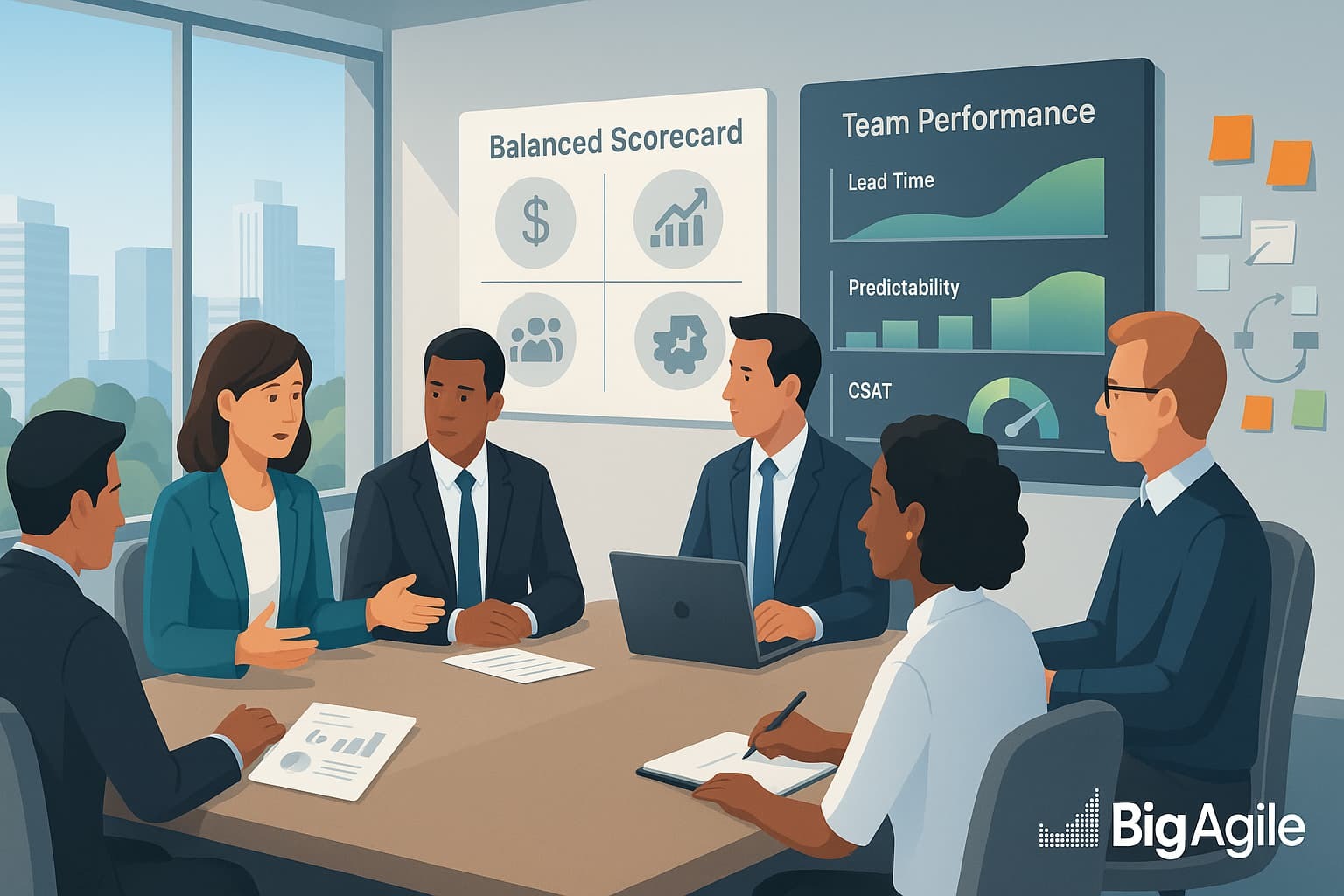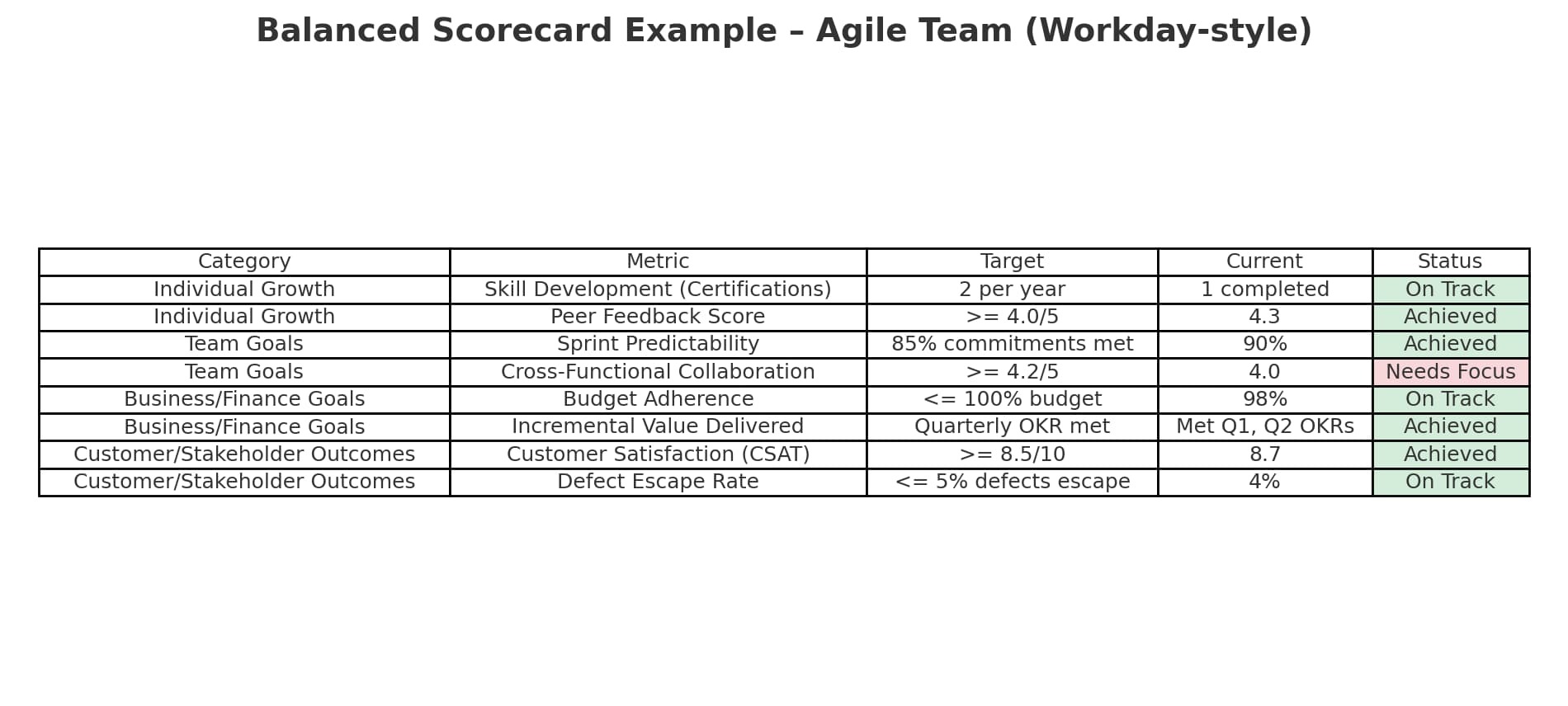
I recall working at an organization where the Scrum Master noticed a frustrating pattern.
Teams discussed collaboration during retrospectives, but at the end of the year, individuals were still evaluated based on personal output. Promotions and bonuses favored solo performance rather than team results. This disconnect was eroding trust: why share credit if the system penalized you for it?
Instead of viewing it as “just an HR problem,” the Scrum Master scheduled a meeting with the HR business partner. Together, they explored how performance goals could be adjusted to recognize collaboration, collective delivery, and customer value. Within months, the evaluation process started to change.
Teams felt more comfortable sharing work, pairing up, and resolving blockers because the incentive system finally aligned with the behaviors Scrum is meant to promote. Shifting this mindset in organizations is a long-term goal—and certainly not an easy one. Then again, no change is easy, but luckily, change is our business.
What.
This story shows how the Scrum Master role goes beyond just running events or safeguarding a Sprint Goal. As John Kotter emphasizes in Leading Change, real transformation needs attention to systems and structures, not only team activities.
Gary Hamel in Humanocracy adds that dismantling bureaucracy and creating human-centered systems is key to unlocking innovation.
Modern Scrum Masters serve as enterprise coaches, shaping policies and practices in HR, Finance, and Operations. Examples include:
HR: Shaping performance systems to reward collaboration over siloed output.
Finance: Coaching adaptive funding models that support incremental value delivery instead of rigid annual projects.
Operations: Addressing governance practices that slow experimentation or lock teams into unnecessary approvals.
So What?
Why does this matter? Because enterprise agility struggles when the systems around it discourage the behaviors Scrum aims to promote. Teams might run Sprints and hold Daily Scrums, but if HR, Finance, or Operations push in the opposite direction, agility stalls.
Scrum Masters who work across these functions help remove the “systemic impediments” that no single team can resolve. Their role becomes more than just supporting teams; it involves aligning organizational structures with agile principles. Let's shift our performance reviews (if they must be done) to more of a balanced score card approach:

Now What?
Scrum Masters who want to operate at this level can start by:
Listening for systemic pain points raised in retrospectives (e.g., “We want to pair more, but performance reviews reward individual velocity”).
Building relationships outside IT: ask HR, Finance, or Operations, “What goals are you trying to achieve, and how might agility help?”
Framing interventions in business terms: show how changes improve predictability, reduce risk, or accelerate delivery of value.
Scaling influence incrementally: pilot small changes (like shifting one team’s goals to collective outcomes) before tackling organization-wide reforms.
Let's Do This!
Scrum Masters are more than just facilitators of team rituals; they are enterprise change agents, shaping the structures that enable or hinder agility at scale.
Their true impact isn’t measured solely by how well a team inspects and adapts, but by whether the organization itself is learning to do the same. In complex enterprises, agility extends beyond the team level, and so should the Scrum Master.